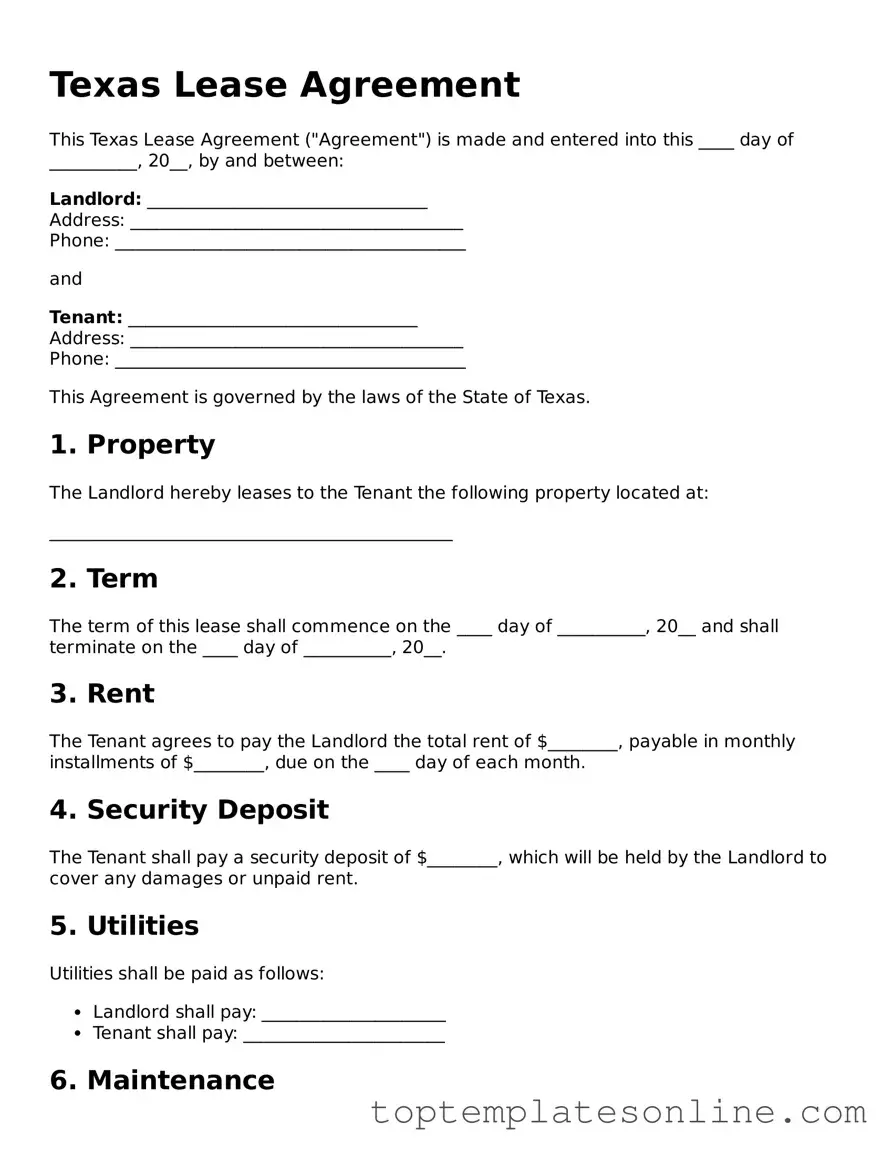Blank Lease Agreement Template for Texas State
A Texas Lease Agreement form is a legally binding document that outlines the terms and conditions between a landlord and a tenant for renting a property. This form serves as a crucial tool to ensure both parties understand their rights and responsibilities. By clearly defining the rental terms, it helps prevent disputes and promotes a smooth landlord-tenant relationship.
Customize Lease Agreement Here
